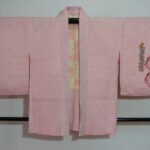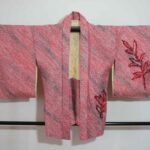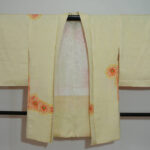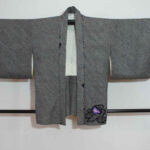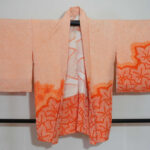Shibori
“Shibori” is a textile technique where fabric, such as silk, is folded, bound with thread, then dyed or processed. Initially, the fabric is folded and bound with thread, followed by dyeing or heat treatment while folded. Subsequently, the binding is undone, revealing beautiful patterns. It’s a labor-intensive process, making it a premium material. While there are machine-assisted processes, it remains labor-intensive.
1. Dyeing:- Shibori is a technique where specific areas of fabric are bound, tied, or pleated before dyeing, creating patterns when the dye penetrates the material. There are various methods including kanoko shibori, arashi shibori, and itajime shibori. This technique is one of Japan’s traditional dyeing methods, producing beautiful patterns and designs.
2. Fiber:- “Japanese Shibori Finished Fiber” refers to fibers such as fabric or yarn that have undergone dyeing. Typically, natural fibers like silk or cotton are used. The unique patterns and designs resulting from shibori dyeing often depict elements of Japanese traditional culture and landscapes, making the fibers themselves artistic pieces.
3. Usage: – “Japanese Shibori Finished Fiber” is used as material for various traditional Japanese garments such as kimono, obi, and accessories. Additionally, the fabrics are used for decorative items like tablecloths, curtains, and interior décor, enhancing the ambiance with their beautiful patterns and color combinations.
4. Craftsmanship:- The fibers play a significant role in crafting artistic items. Fabrics finished with it’s techniques are used not only for garments like kimono and obi but also for creating bags, pouches, accessories, and other items. These products showcase Japan’s traditional culture and artisanal skills, earning admiration for their craftsmanship.
Showing all 5 results
